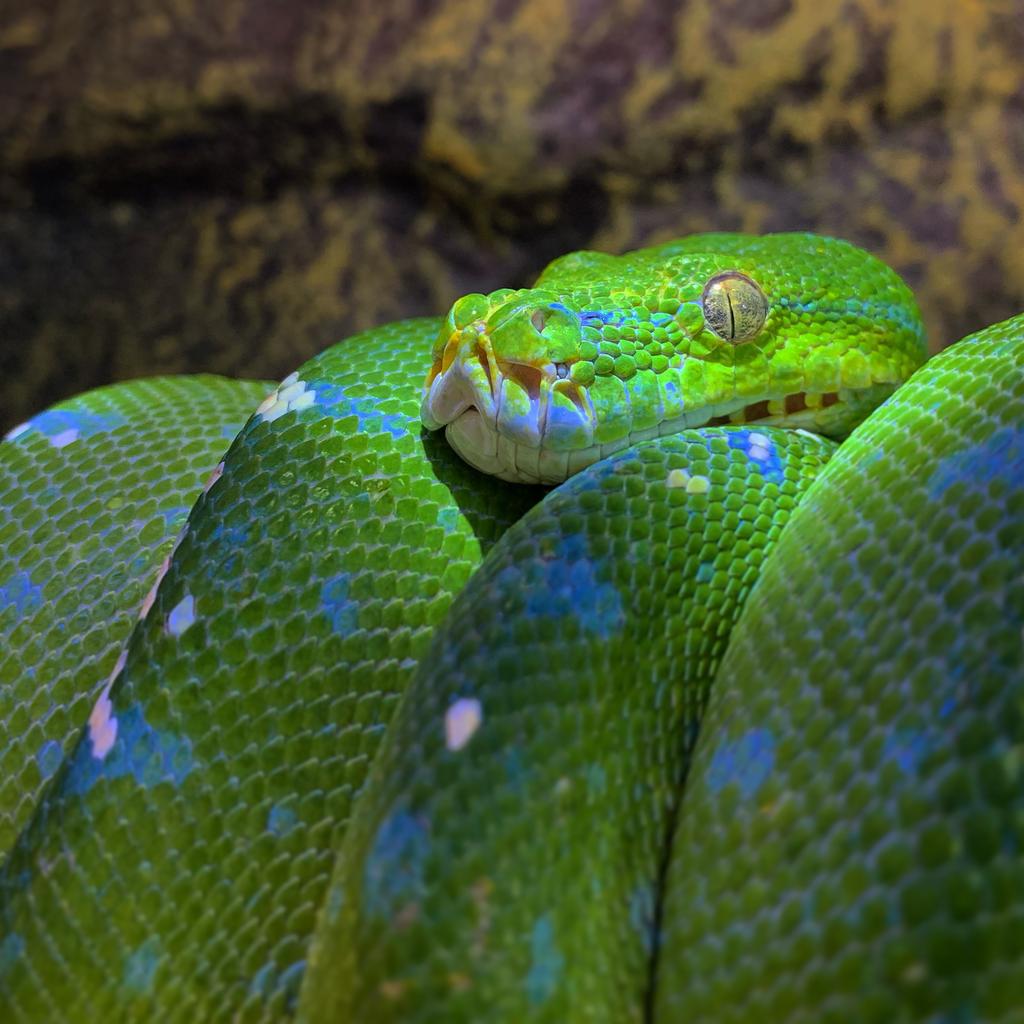
Difficulty: Intermediate - Advanced
- Humidity: This species has higher humidity requirements
- Airflow: Higher humidity must be accompanied by sufficient air flow
- Arboreal: This species utilizes perches and must often be “de-perched” to handle
- Import risk: Many snakes of this species sold as pets are imports
Adult Size
- 4 to 6 feet (1.2 to 1.8 meters)
- Females are larger than males
Life Cycle
- Average Lifespan: 20+ years
- Sexual Maturity
- Male: 2-3 years
- Female: ~4 years
- Breeding Weight
- Male: 600+ grams
- Female: 1000+ grams
- Oviparous: Egg Laying
- Ontogenic color change: Babies are born either red or yellow and change color starting at ~1yr
- Color change may take 3-5 years depending on locality
Enclosure Size
- Male: 36x18x12 inches minimum for an adult
- Female: 36x24x24 inches minimum for an adult
- A wider enclosure is almost always better than a taller enclosure for this species as it gives them room to thermaregulate.
Husbandry Values
- Temperature:
- Ambient: 78-80°F (25.6-26.7°C)
- Basking: 88-90°F (31.1-32.2°C)
- The basking area should never exceed 90°F (32°C)
- Humidity: 60-70% (70-80% while in shed)
- Imported specimens may have stricter humidity requirements
- Lighting: No specific requirements
- UV Light can be beneficial
Diet
- Carnivore: Rats or Mice. May enjoy chicks
Behavior Notes
- Arboreal: These snakes will climb and require surfaces to perch on
- Temperament: Captive bred species are naturally docile & curious
- Ambush Predator: This species hunts by surprising and wrapping its prey
- Sometimes at night they can be seen "caudal luring" by wiggling the tip of their tail like a worm
***These care sheets assume that you understand the basics of snake care & husbandry.
If you are a new snake owner, it is recommended that you read our articles on general reptile care and then fine tune the requirements for the specific species you are interested in.
Climate & Husbandry
The green tree python inhabits rainforests in Northern Australia; Indonesia, including West Papua; Papua New Guinea, and surrounding islands in those regions. These areas receive a large amount of rainfall for much of the year and maintain a high humidity.
Green tree pythons are found climbing high in trees, but also inhabit lower plants and bushes, and can be occasionally seen on the ground.
Feeding
This species is carnivorous and feeds on rodents, although many enjoy chicks. Feed a rodent that is big around as the snake’s girth an average of once a week, but monitor weight—as your green tree python reaches adulthood, you may feed less frequently to avoid obesity. These snakes have a relatively slow metabolism, and many do not exercise.
This species does best feeding at night. They have a strong feeding response, and attack prey by ambushing them from trees (and sometimes from the ground!) Therefore it is very useful to establish a consistent feeding schedule.
Handling & Temperment
Green tree pythons have a particularly bad reputation for being an “aggressive” species. However, much of this comes down to the animal’s background, feeding routine (see above) and handling habits.
Green tree pythons perch, which can present a unique challenge to the new arboreal keeper. If deperched rapidly, even the gentlest green tree python will often dart forward or flail to try and break a fall. This can be startling for the would-be handler as well.
It is strongly recommended to use perches that can be removed easily and deperch the animal slowly and gently.
References
- Green Tree Python, IUCN Red List: https://www.iucnredlist.org/species/177524/21649845
